412 (F) Sqn Promptus Ad Vindictam ("Falcon")
History of the Squadron during World War II (Aircraft: Spitfire Mks. IIA, VB, IXB, IXE, XVI, XIV)
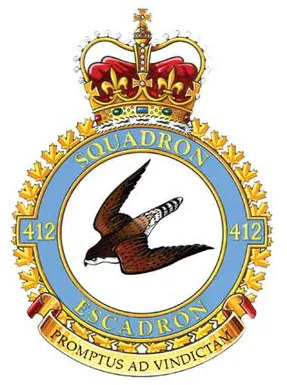
The squadron was the tenth of the RCAF's squadrons to be formed overseas in WWII. It was the seventh fighter squadron to be so formed. It was established at Digby, Lincolnshire, England  on June 30, 1941. John Gillespie Magee, the author of the famous aviation poem “High Flight” was serving with 412 Squadron when he was killed in a mid-air collision in his Spitfire in 1941. The squadron flew Spitfire aircraft in the defence of Great Britain, formed part of the Canadian Kenley Wing within No. 11 Group, Fighter Command. It was re-equipped with the Spitfire lXb in November 1943 and began operating over northern France in preparation for operation Overlord, the D-Day landings. It was during late 1943 that the ace George “Screwball” Beurling scored his last air victory while serving with the squadron. Shortly after D-Day, on June 19, 1944, the squadron moved to France in a fighter and ground support role. It then supported the Allied armies, moving through France, the Belgium, the Netherlands and Germany. It was one of four RCAF day fighter units retained in Germany as part of the British Air Forces of Occupation before being disbanded at Utersen, Germany
on June 30, 1941. John Gillespie Magee, the author of the famous aviation poem “High Flight” was serving with 412 Squadron when he was killed in a mid-air collision in his Spitfire in 1941. The squadron flew Spitfire aircraft in the defence of Great Britain, formed part of the Canadian Kenley Wing within No. 11 Group, Fighter Command. It was re-equipped with the Spitfire lXb in November 1943 and began operating over northern France in preparation for operation Overlord, the D-Day landings. It was during late 1943 that the ace George “Screwball” Beurling scored his last air victory while serving with the squadron. Shortly after D-Day, on June 19, 1944, the squadron moved to France in a fighter and ground support role. It then supported the Allied armies, moving through France, the Belgium, the Netherlands and Germany. It was one of four RCAF day fighter units retained in Germany as part of the British Air Forces of Occupation before being disbanded at Utersen, Germany  on March 21, 1946.
on March 21, 1946.
In the course of hostilities, the squadron flew 12,761 sorties for the loss of 63 aircraft and 62 pilots, of whom 21 were killed, 14 presumed dead, 11 POW. The squadron claimed 106 enemy aircraft destroyed, 11 probably destroyed and 46 damaged. On the ground, they claimed 282 motor vehicles and 22 locomotives. The squadron had 5 aces (shot down 5 or more enemy aircraft): Flight Lieutenant D.C. Laubman DFC & Bar; Flight Lieutenant W.J. Banks,DFC & Bar; Flying Officer D.R.C. Jamieson DFC & Bar; Flying Officer P.M. Charron; Flight Lieutenant R.I.A. Smith DFC. Overall, the squadron was awarded 7 Bars to DFC, 16 DFCs and 4 MiD. Battle Honours were: Defence of Britain 1941-44, Wikipedia, Kostenuk and Griffin
Maps for Movements of 412 Squadron 1941-46
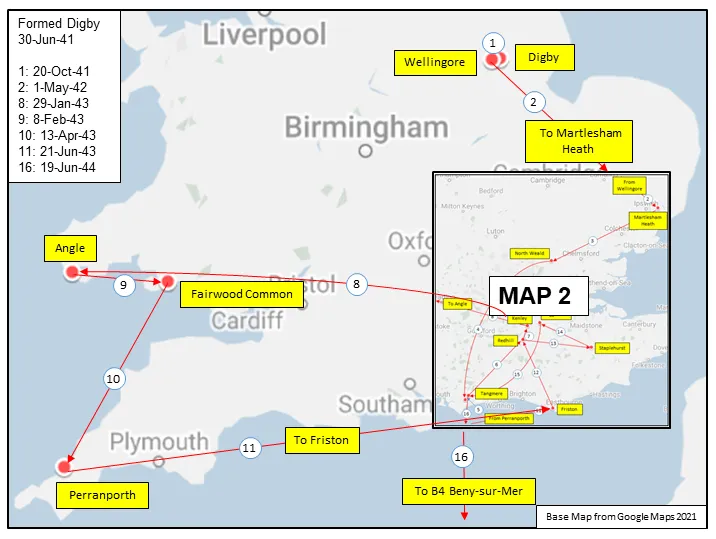
MAP 1: 412 Squadron Movements 1941-44 (right-click on image to display enlarged in new tab)
|
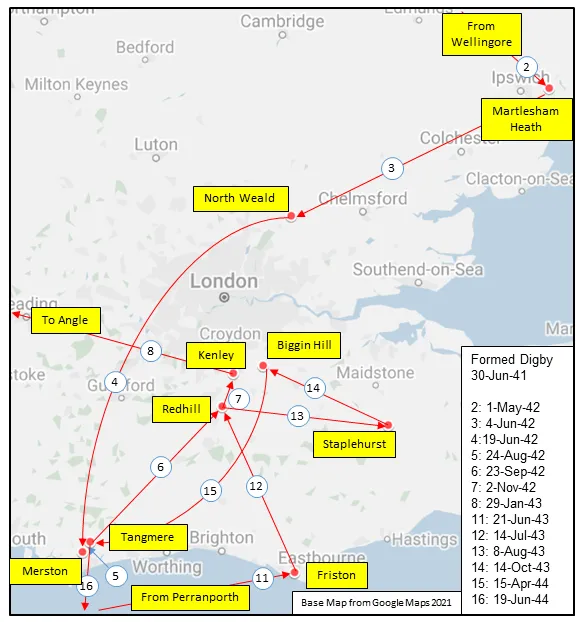
MAP 2: 412 Squadron Movements Detail of Map 1
|
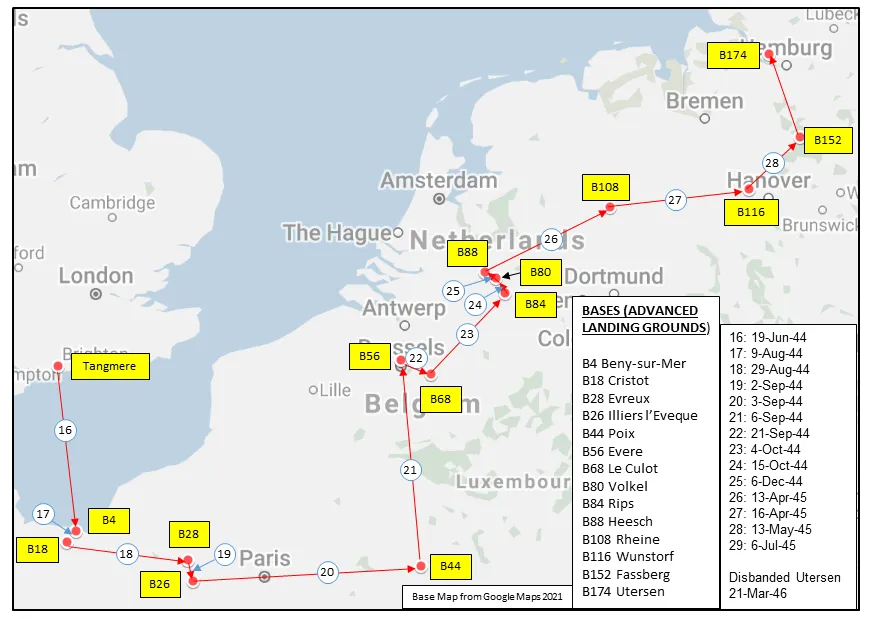
MAP 3: 412 Squadron Movements in Europe 1944-46
|
412 Squadron History Summary 1941-46
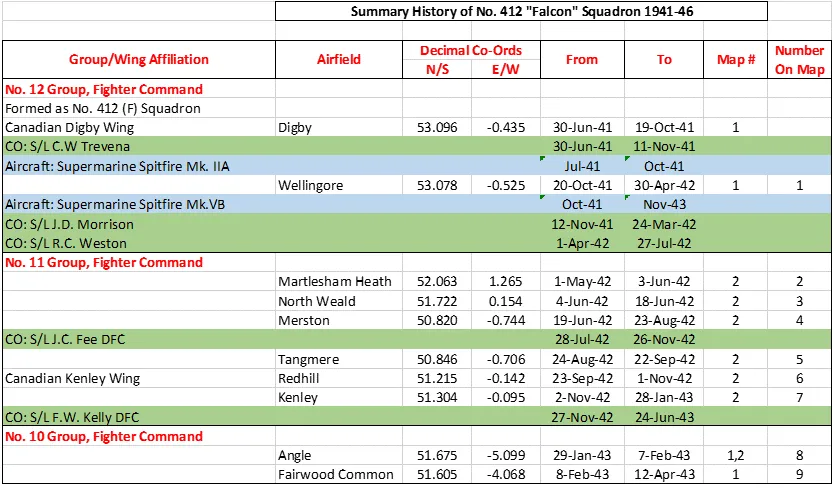
412 Squadron History Summary 1941-46 Page 2
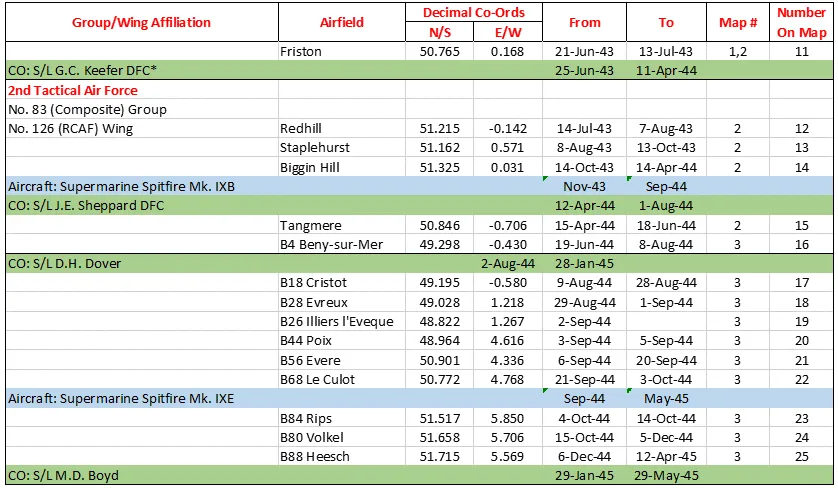
412 Squadron History Summary 1941-46 Page 3

History of the Squadron Post-WWII (Aircraft: CC-117 Falcon, CC-144 Challenger and CC-109 Cosmopolitan)
After the Second World War, Number 12 Communications Flight was reassigned as 412 Squadron on 1 April 1947, and renamed 412 (Composite) Squadron based at Rockcliffe, Ontario  . In 1955, the squadron moved to Uplands, Ontario. Upon unification in 1968, 412 Squadron became the VIP squadron for the Canadian Forces based at CFB Uplands
. In 1955, the squadron moved to Uplands, Ontario. Upon unification in 1968, 412 Squadron became the VIP squadron for the Canadian Forces based at CFB Uplands  and flew the CC-117 Falcon, CC-144 Challenger and CC-109 Cosmopolitan. In the late 1970s a sub-unit was established at CFB Lahr in West Germany; this operation closed in 1993. In 1994, CFB Ottawa (Uplands) closed and 412's fleet was moved to a civilian hangar at Ottawa International Airport. All aircraft are maintained by Transport Canada on behalf of the Canadian Forces. Today, the Squadron performs the VIP and general transport duties with the CC-144 Challenger.
and flew the CC-117 Falcon, CC-144 Challenger and CC-109 Cosmopolitan. In the late 1970s a sub-unit was established at CFB Lahr in West Germany; this operation closed in 1993. In 1994, CFB Ottawa (Uplands) closed and 412's fleet was moved to a civilian hangar at Ottawa International Airport. All aircraft are maintained by Transport Canada on behalf of the Canadian Forces. Today, the Squadron performs the VIP and general transport duties with the CC-144 Challenger.



